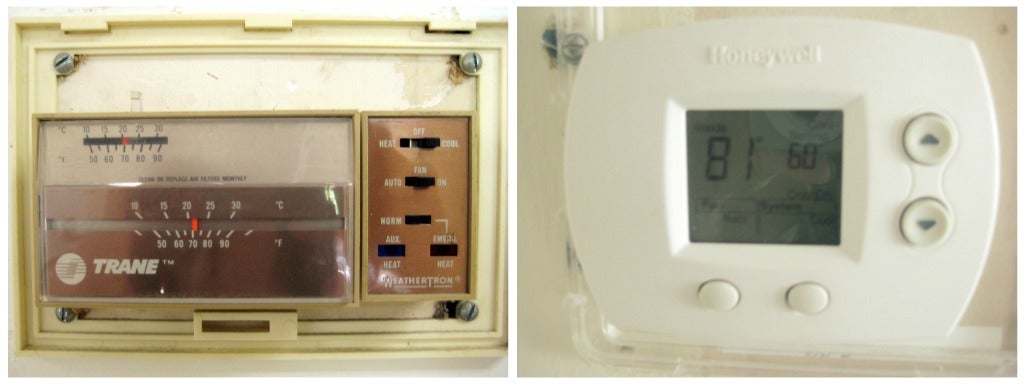 By: Eliza Davis, 2011 Climate Corps Public Sector Fellow at Shaw University in Raleigh, NC; MEM candidate at the Nicholas School of the Environment, Duke University
By: Eliza Davis, 2011 Climate Corps Public Sector Fellow at Shaw University in Raleigh, NC; MEM candidate at the Nicholas School of the Environment, Duke University
My first month as a Climate Corps Public Sector fellow at Shaw University in Raleigh, NC, has flown by. My EDF partner, Jen Weiss, and I had a whirlwind of meetings with energy specialists, and have explored the ins and outs of Shaw’s campus. We have ventured far and wide in search of energy savings, checking natural gas meters and counting the number of light bulbs in classroom buildings. However, we made one of our greatest discoveries in our very own workspace.
 Jen and I work in Estey Hall, a beautiful, red brick administration building. It was constructed in 1864 as a dormitory for women. Because of its age, the building is difficult to uniformly heat and cool. Walking through the hallways and into rooms, we noticed defined layers of temperature. We decided to track thermostat settings to get to the bottom of these temperature discrepancies. What we found surprised us!
Jen and I work in Estey Hall, a beautiful, red brick administration building. It was constructed in 1864 as a dormitory for women. Because of its age, the building is difficult to uniformly heat and cool. Walking through the hallways and into rooms, we noticed defined layers of temperature. We decided to track thermostat settings to get to the bottom of these temperature discrepancies. What we found surprised us!
Not only were many of the thermostats set at 70 degrees or below, but many newer programmable thermostats were on the energy wasting ‘hold’ setting. This means that the rooms are kept at the same temperature, day or night, full or empty, and regardless of outdoor temperature. Programmable thermostats can reduce energy costs by allowing you to set different temperatures based on the time of day and expected room occupancy.
After figuring out the reasons behind the layers of temperature at Estey Hall, we expanded our investigation to thermostats around campus. We uncovered thermostats of all styles and ages: small square controls that only allow for an up or down adjustment, fancy programmable models, and rectangular hotel-style air conditioner units that have ‘warmer’ to ‘cooler’ dials. Overall, we found that despite the type of thermostat, most offices, classrooms, and meeting spaces were kept cool all day long.
So began our experiment to see if anyone would notice slight increases in temperature in large meeting spaces. We increased a few of the 69-degree thermostats to a range between 72 and 76 degrees. Thus began the thermostat game. Every morning we rushed eagerly to thermostats to check the settings, and lo and behold – the thermostats were reset and left at or below 70 degrees.
Our survey of Shaw’s thermostats showed us that there is a significant potential for savings with temperature management. In the history of the Climate Corps Public Sector program, temperature management makes up one-third of projected energy savings. Shaw University can easily reduce energy use and carbon pollution through the introduction of more programmable thermostats and a campus-wide energy management system.
The thermostat game taught us the most important lesson: A device is only as good as its operation. We recognize now that energy conservation education will be an important part of our recommendations for Shaw, and we are excited about developing ways to raise awareness about energy use on campus.
EDF Climate Corps Public Sector (CCPS) trains graduate students to identify energy efficiency savings in colleges, universities, local governments and houses of worship. The program focuses on partnerships with minority serving institutions and diverse communities. Apply as a CCPS fellow, read our blog posts and follow us on Twitter to get regular updates about this program.











One Comment
Thermostats are a key way to save energy. The problem is that even if you change them out with programmable models, people override the settings. The only way to overcome this is to install lockable thermostats, put lockable covers over them, or use a central system with remote sensors.